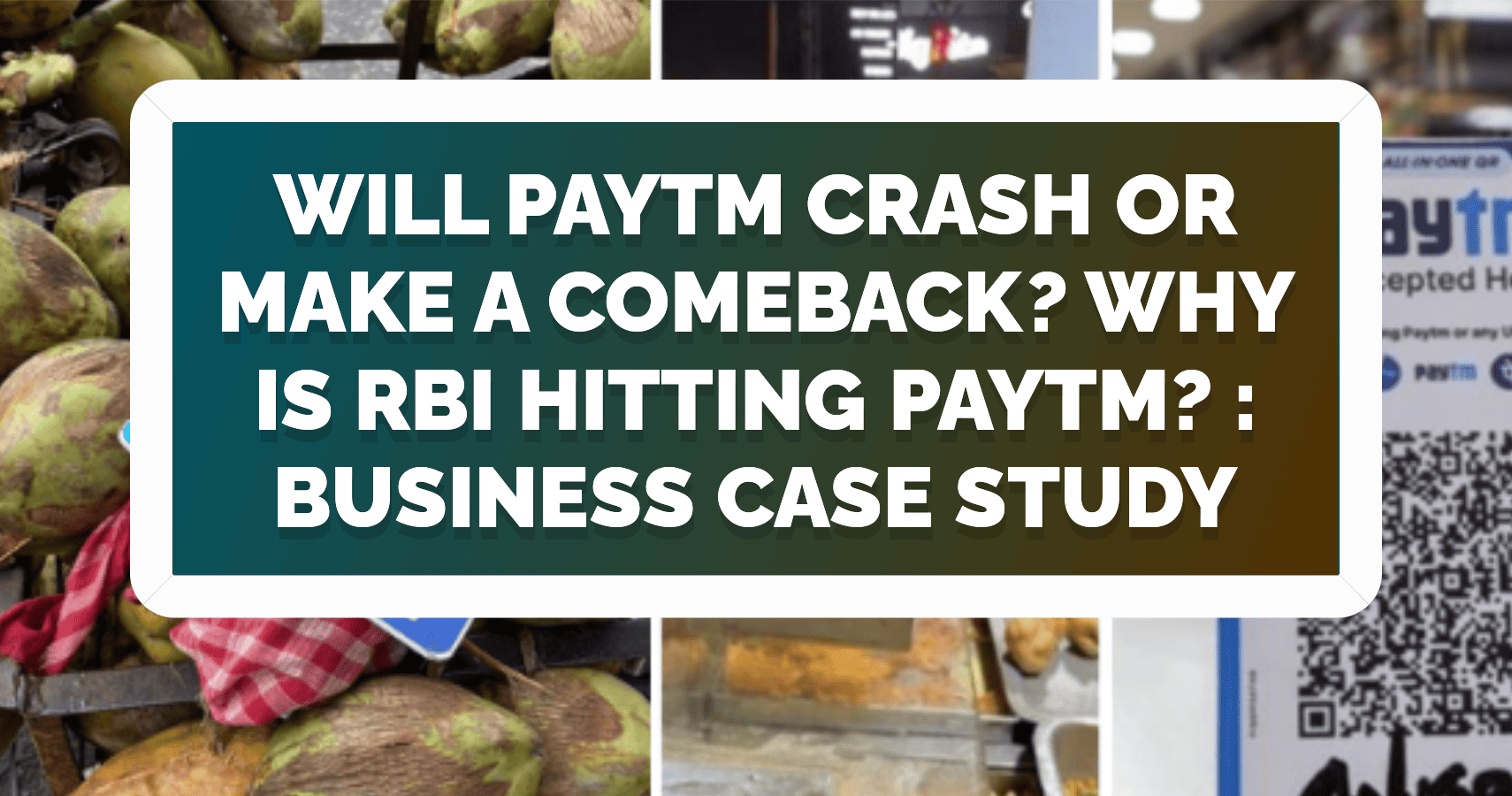Action against Paytm Payments Bank Ltd under Section 35A of the Banking Regulation Act, 1949https://t.co/bswaWHSxtk
— ReserveBankOfIndia (@RBI) January 31, 2024
Introduction
The Indian fintech giant, Paytm, faced a major setback on January 31, 2024, when the Reserve Bank of India (RBI) imposed restrictions on Paytm Payments Bank, prohibiting its core services. This move had significant repercussions, causing a 36% drop in Paytm’s stock value within two days, resulting in a staggering $2 billion loss in market value.
Regulatory History
The recent restrictions were not the first time the RBI took action against Paytm. In 2018 and 2022, Paytm faced bans on onboarding new users and had its payment aggregator license rejected, accompanied by a penalty of 5.4 crore rupees. The Enforcement Directorate also conducted searches at Paytm’s premises, raising concerns about regulatory compliance.
Impact on Paytm’s Services
The RBI’s recent order affects 300 million wallets, 30 million bank accounts, and 8 million fast tags in Paytm’s portfolio. The restrictions, effective until February 29, led to a series of challenges for Paytm, necessitating immediate action to prevent a further decline.
Understanding Paytm Payments Bank
To comprehend the challenges Paytm faces, it’s essential to distinguish between a traditional bank and a payments bank. Paytm Payments Bank, as a simplified version, offers limited services. Customers can store a maximum of 2 lakh rupees, make transactions using a debit card, and earn interest on deposits invested with partner banks. However, the recent crisis unveils critical limitations in Paytm’s operations.
Specific Challenges and Solutions
- Deposits and Transactions: Paytm Payments Bank is barred from accepting fresh deposits and conducting transactions after February 29. The challenge lies in swiftly transitioning its 2.8 billion transactions, previously reliant on Paytm’s payments bank, to a new partner bank, a daunting logistical task.
- Merchant Payments: With 37 million merchants linked to Paytm Payments Bank, Paytm faces the complex challenge of convincing these entities to switch to a different bank for UPI transactions, accompanied by the issuance of new QR codes.
- Ecosystem Disruption: Paytm’s robust ecosystem, characterized by strong relationships with merchants, is now disrupted. This disruption poses a risk of losing a significant number of merchants to rival platforms, potentially resulting in substantial financial losses.
Regulatory Actions and Geopolitical Factors
The Indian government’s stringent actions against Paytm are not isolated incidents. The government expressed concerns over Paytm’s data security practices, given its Chinese connections. With Chinese giants like Alibaba injecting capital into Paytm, the government fears data leaks to China, leading to a series of investigations and restrictions.
Business Lessons
The Paytm case study imparts crucial business lessons:
- Government Influence: Acknowledge the influence of the Indian government in shaping the business landscape.
- Geopolitical Considerations: Entrepreneurs must exercise caution when raising funds and entering markets with geopolitical complexities.
- Incentive Management: The Paytm crisis underscores the importance of carefully planning and monitoring incentives to avoid unintended consequences.
Conclusion
As Paytm navigates these challenges, its next steps involve transitioning to new bank partners and mitigating the potential loss of merchants. The aftermath of this crisis will likely reshape the Indian fintech sector, emphasizing the significance of regulatory compliance and geopolitical awareness.
Note: This comprehensive overview aims to provide insights into the Paytm crisis, covering its regulatory history, specific challenges, geopolitical implications, and valuable business lessons.

